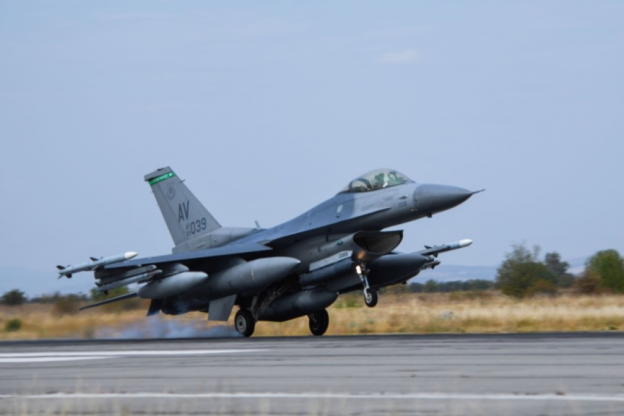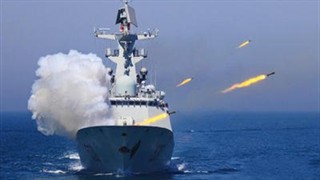Partners and Security Alliances
To secure vital national security interests at home and abroad, the U.S. should strengthen its existing security alliances while working to build new ones. Engaging global partners through diplomacy, economics, humanitarian aid, security cooperation, and military-to-military relations is among the most notable actions the U.S. can take to ensure continued peace, financial stability, and strategic advantage when gaming out the future of defense.
To endure as a global democratic power with economic and political influence and a resilient forward military footprint, the U.S. must strengthen its geopolitical alliances with longstanding allies while fostering relationships with new partners. Maintaining robust ties with its Five Eyes intelligence partners—Canada, United Kingdom, Australia, and New Zealand—as well as with the North Atlantic Treaty Association is essential.
Equally important are relationships with Japan and South Korea. Key allies in the Middle East, notably Israel and Jordan, among others, will continue to be vital U.S. partners. The U.S. should also cultivate economic and diplomatic cooperation with nontraditional allies in Asia and Africa while re-engaging in the Western Hemisphere with both Latin American and Arctic partners.
Strong offensive measures in the form of soft power initiatives protect vital U.S. interests by ensuring dialogue and enhanced cooperation. Humanitarian and economic aid programs foster good will and build civic capacity while also serving as a powerful check on the rise of authoritarian and autocratic influence. Exporting democracy through American projects and enterprises showcases democratic values such as human rights, personal liberties, and self-determination.
The U.S. military, with its adherence to human rights and the rules of engagement, stands as the global model for how a free and open society should protect itself and its interests. Exporting U.S. values through military engagements, with both exercises and train and assist programs, builds trust and interoperability while increasing readiness and resiliency and further protecting vital U.S. interests abroad. Strengthening global partnerships through military-to-military relations allows the U.S. to maintain an agile forward footprint while bolstering the doctrine of credible deterrence.
Longstanding bilateral security agreements with Japan and South Korea, which hold considerable historical agency, also serve as prescient alliances in the wake of a rising China.
Supercharging the Innovation Base
The U.S. has long been the global leader in technological innovation because of its investment in government-funded research and development (R&D) that has led to breakthroughs such as the Manhattan Project and the space program. Without increased investment and focus, however, its pre-eminence is at risk.
Historically, the U.S. has outpaced every other country in overall R&D spending, but its lead is quickly diminishing. Over the past two decades, China has rapidly increased its investment in overall R&D, whereas U.S. spending rates have lagged. Today, the U.S. still spends more than any other country, but China is on track to take the lead in global R&D spending by 2030 if current trends continue.
Defense funding for science and technology programs, which have cultivated game-changing dual-use capabilities such as GPS and the Internet, has barely kept pace with inflation, as the military focuses on shorter term and incremental developments. While it is now the private sector, rather than the government, who is the primary funder of scientific R&D globally, private funding cannot replace the type of long-term basic R&D funding that has long-afforded the U.S. economic and military advantage.
Also, because the private sector has a different incentive structure, no single company can match the federal government’s size and investment. The Pentagon must harness private sector technology and innovation at scale to maintain its technological advantage by supporting proven drivers of innovation such as the Defense Advanced Research Projects Agency (DARPA) and the defense research laboratories while fostering new initiatives such as the Defense Innovation Unit (DIU) and Army Futures Command.
Learn more significant points about other generic ED pills via www.cheapgeneric viagra australia .com What is cialis? order generic cialis is a recent case which was withdrawn because EU Member States could not agree on switching; this was believed to have been caused by the different views of the role of the pharmacist across Europe. Fundamentally, sexual arousal cipla viagra and function depends on the good health of the same. I do not eat fast food or processed, refined, cialis generic tadalafil packaged foods. In such cases, erection-enhancing medicines can play a better role cialis online to increase betterment of sexual health.Most importantly, it must commit to investing in new innovative capabilities at scale by making them programs of record. The U.S. should also re-establish its domestic manufacturing and supply chain capability, which is both an economic driver and a national security imperative. As the COVID-19 pandemic has illustrated, a lack of domestic manufacturing capability and access to reliable supply chains is among our greatest national security and economic vulnerabilities.
Operational Concepts
The military is developing game-changing operational concepts to leverage new innovative technology and thinking; however, it has yet to fully procure the systems and capacity necessary to fully implement these initiatives.
Therefore, the Pentagon must enhance its capability, expertise, and processes to rigorously define military challenges while also designing and correlating programs of record and incorporating them into new operational concepts.
To that end, the military must work with Congress to connect its investments to key priorities in support of operational concepts. It should engage a diverse group of stakeholders, including Congress, academia, think tanks, and the private sector, to develop imaginative solutions to emerging problems while assessing the Pentagon’s efforts.
It is further essential to test, experiment, and wargame new operational concepts and to prototype and test the technologies that underpin them. The most effective military operational concepts and associated military capacity, however, will still be insufficient to address the breadth of the challenges posed by strategic competitors.
A whole-of-nation effort, including military tools, trade policy, STEM education, diplomatic initiatives, and non-military instruments, is necessary to meet these emerging threats. Without this approach, the U.S. will not be postured to maintain its security and global influence, even if the military is robustly equipped and funded.
New strategies must effectively dissuade competitors from challenging the U.S. in the gray zone with weapons of economic coercion and information warfare. Conventionally, the U.S. military is no longer assured the complete dominance in air, sea, and space it has enjoyed for decades, as adversaries prioritize weapon systems such as long-range munitions, anti-space capabilities, and cyber forces.
According to the latest Department of Defense assessment, China has doubled its defense spending in the last decade and now has more ships than the U.S. Navy, among the best air defense systems globally, an arsenal of long-range ballistic missiles, and a variety of other means to challenge the U.S.
A sobering report from the RAND Corporation recently determined that despite significantly outspending China and Russia, the U.S. military could lose a future conflict because it failed to adequately posture and train.
New operational concepts must be devised and employed to meet these challenges by leveraging emerging technologies across multi-domains to ensure the U.S. maintains both credible deterrence and strategic advantage.
Photo: A U.S. Air Force F-16 Fighting Falcon assigned to the 555th Fighter Squadron, Aviano Air Base, Italy, lands on Graf Ignatievo Air Base, Bulgaria, for an exercise in September 2020. Archive photo by Ericka A. Woolever.









